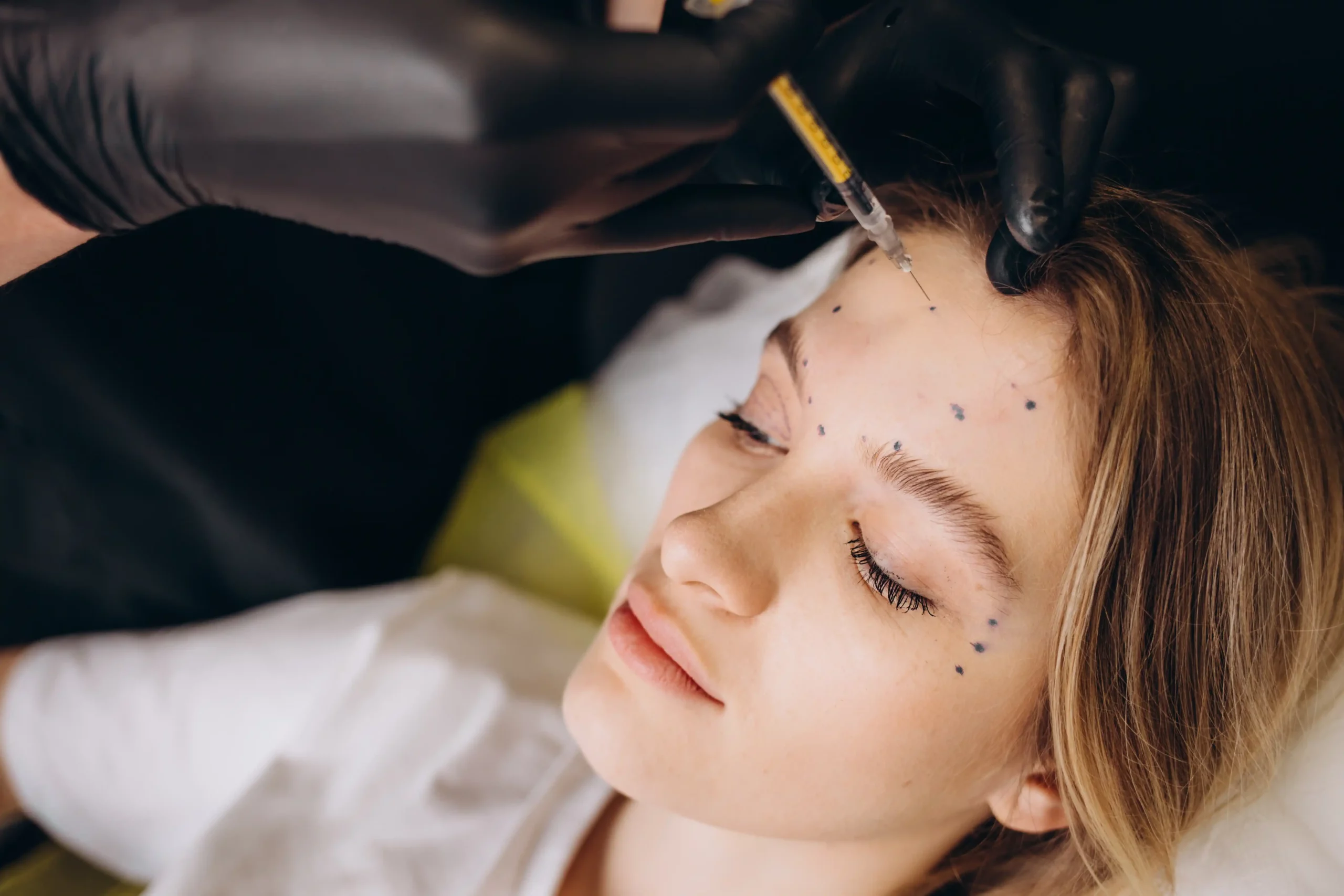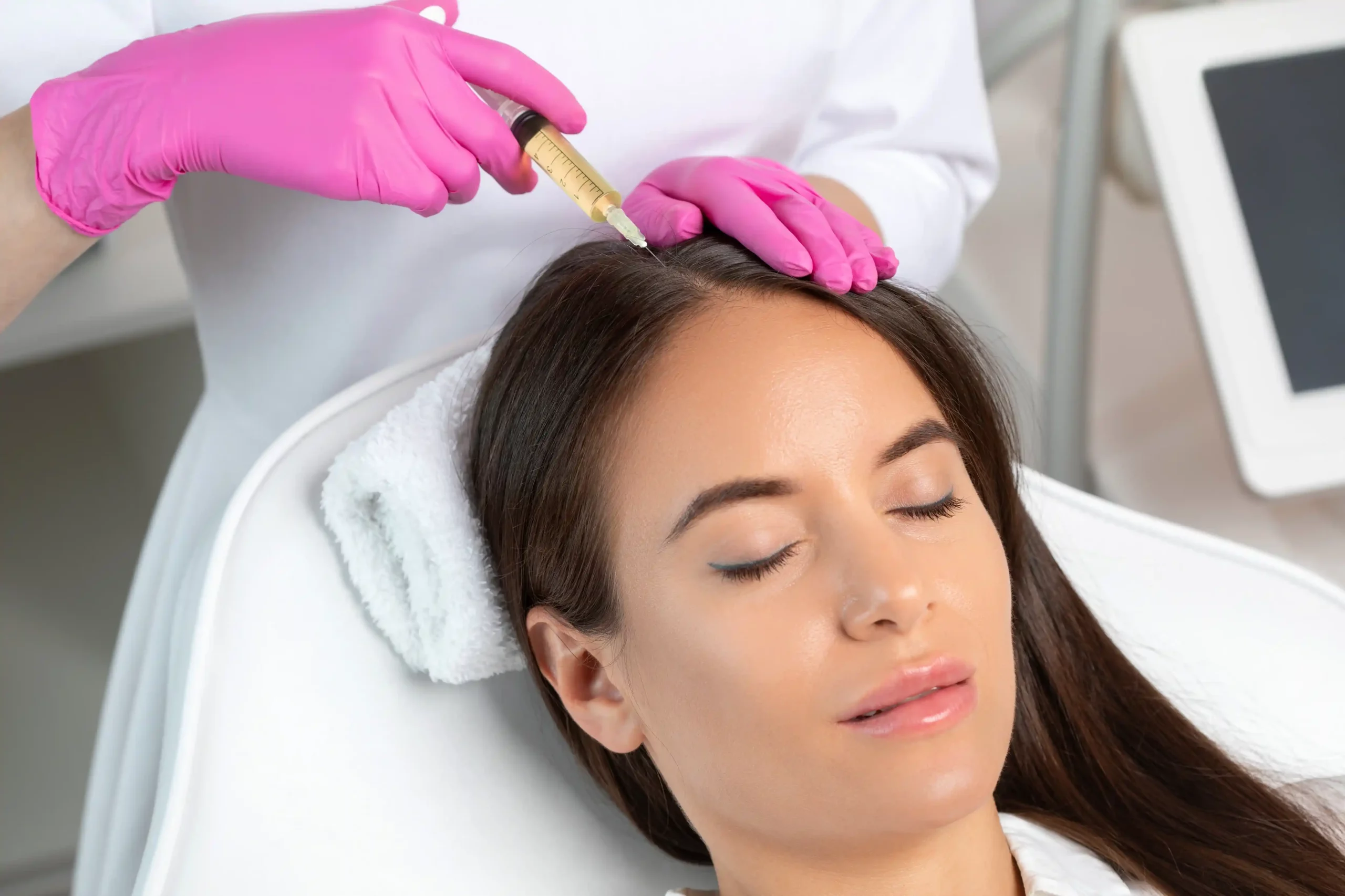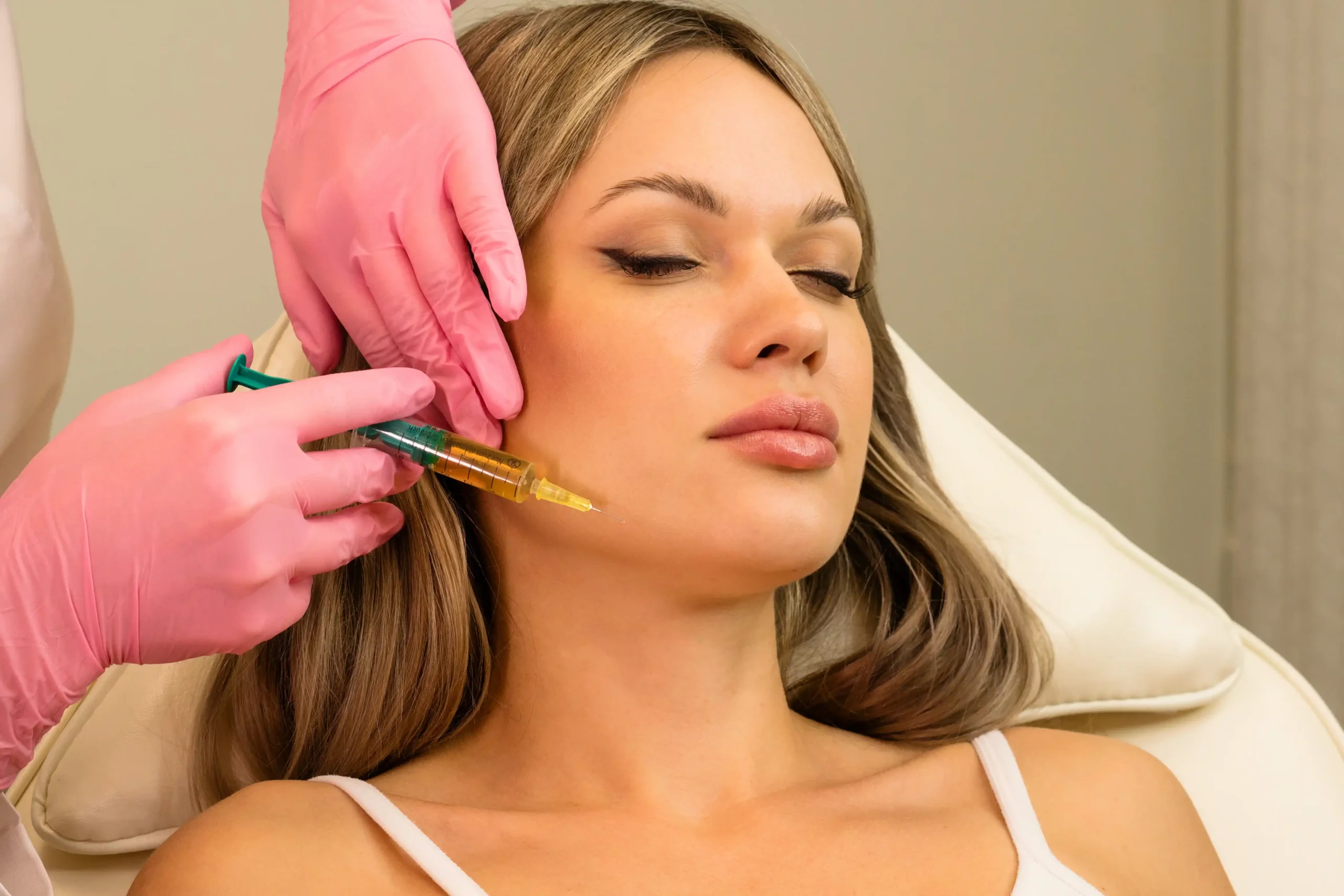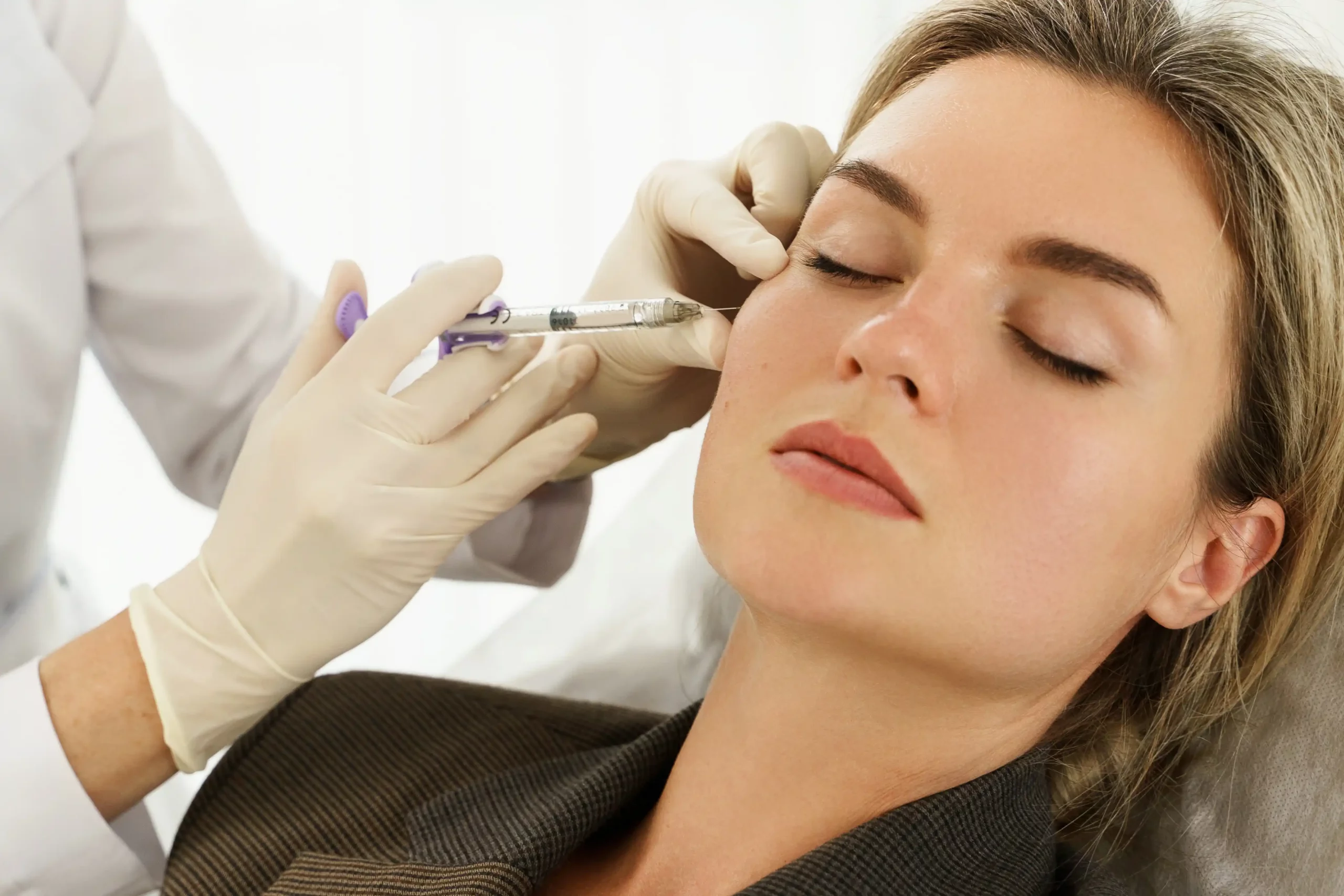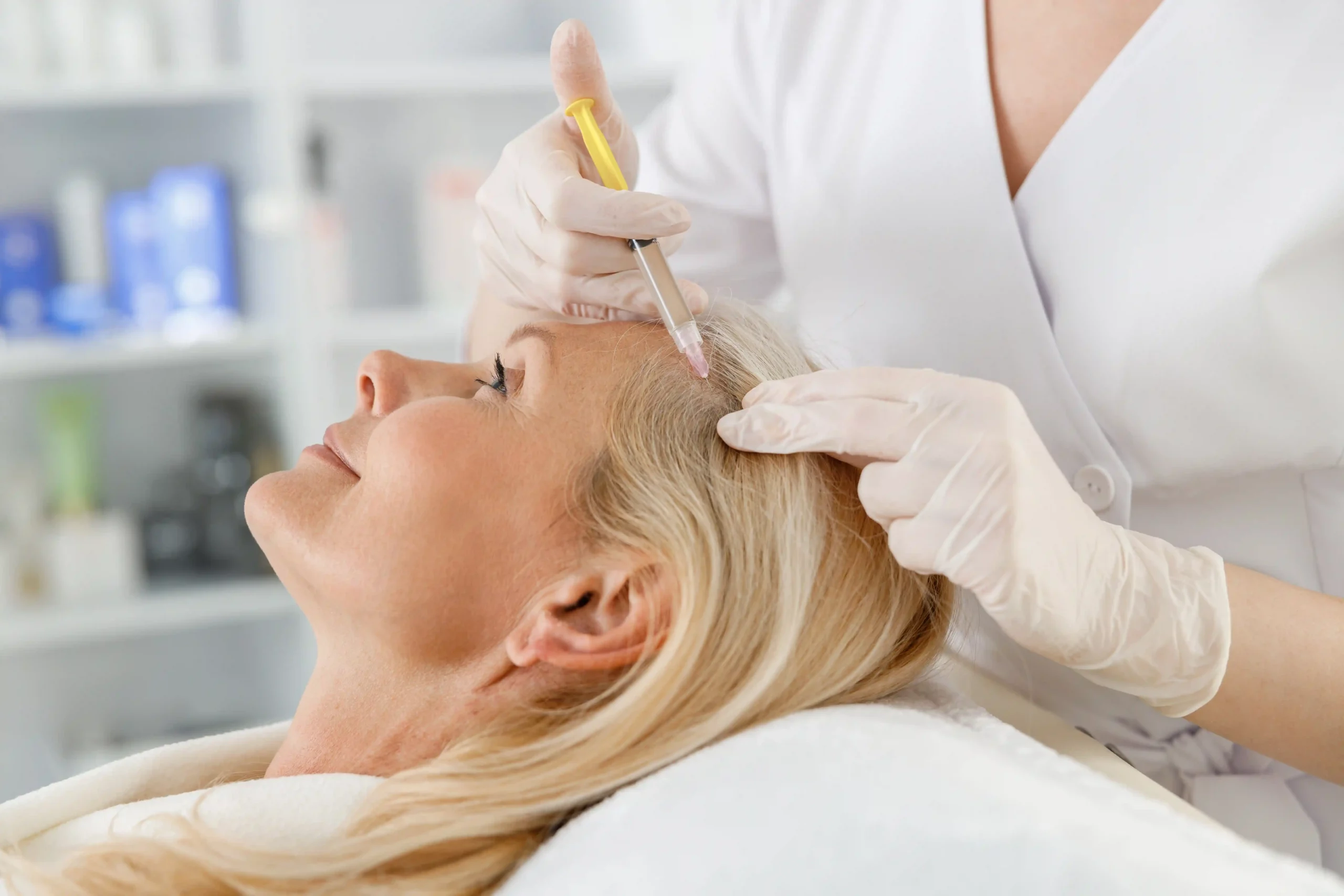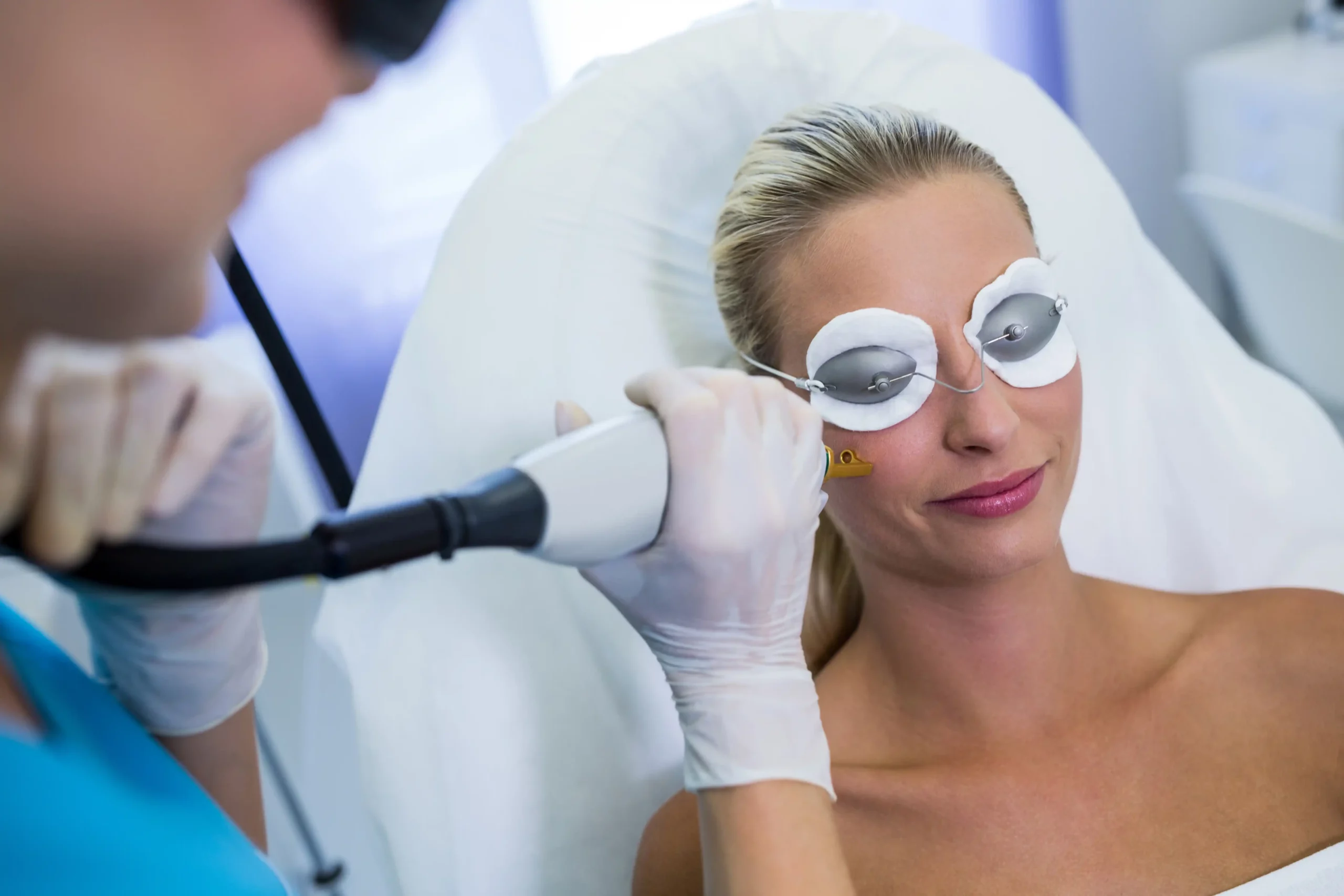Table of Contents
Platysmal bands—those vertical lines that appear on the neck over time—can become a source of frustration for many individuals looking to maintain a smoother and more youthful look. Unlike wrinkles that stem from surface-level concerns like sun damage or dryness, these bands are caused by the underlying platysma muscle, which tightens and becomes more visible with age.
Fortunately, neuromodulators like Botox, Dysport, and Xeomin offer you a non-surgical treatment alternative to help soften the appearance of these bands by targeting the muscle itself.
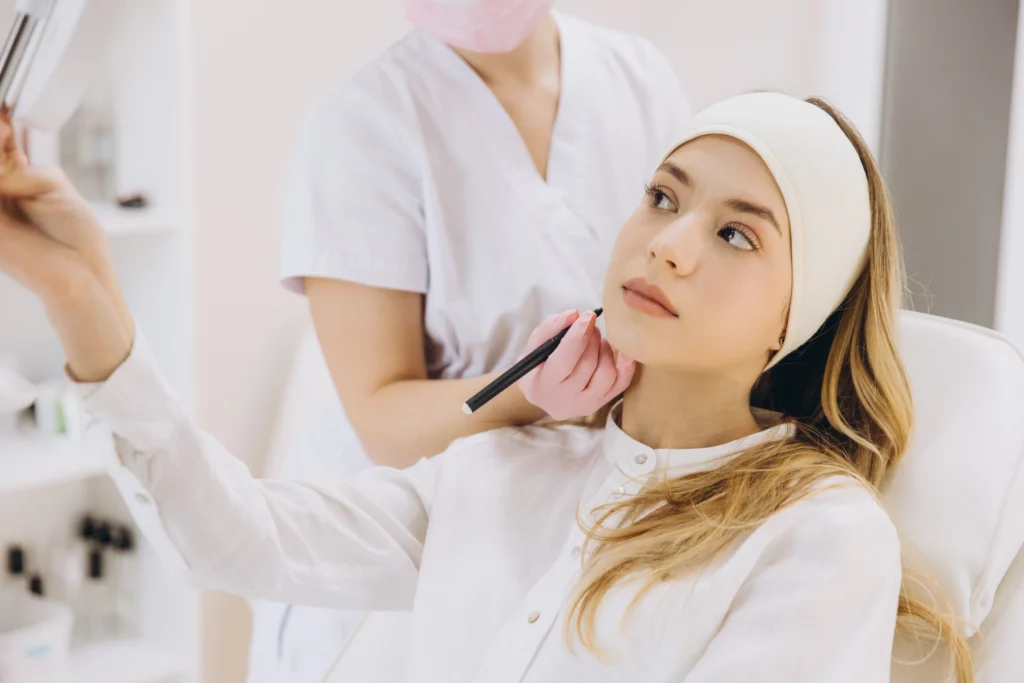
Platysmal Bands and Its Role in Muscle Movement
The platysma muscle stretches from the jawline down to the collarbone. As this muscle becomes more active and less elastic over time, it starts to pull on the skin, creating prominent vertical bands. This effect is particularly noticeable when speaking, swallowing, or clenching the jaw. Unlike fat accumulation or skin laxity that may require surgical intervention, platysmal bands are largely a muscular issue—making neuromodulators an effective option to address them at the source.
When injected precisely into the platysma, neuromodulators cause the muscle to relax. This reduces the pulling effect on the skin and softens the visible bands without altering the natural contour of the neck. Since the treatment doesn’t involve cutting or removing tissue, it’s a desirable option for patients who want results without going under the knife.
How Neuromodulators Work on the Neck
Neuromodulators like Botox, Dysport, and Xeomin are derived from botulinum toxin type A. These injectables work by blocking the nerve signals that trigger muscle contraction. Once the signal is interrupted, the targeted muscle temporarily relaxes. When applied to facial areas like frown lines or crow’s feet, this leads to smoother skin. The same principle applies to the neck.
By injecting small doses into specific points along the platysma, the muscle’s movement is reduced. This causes the bands to soften, leading to a smoother, more refreshed neck appearance. The procedure is performed with fine needles and usually takes less than 30 minutes to complete.
What the Treatment Process Looks Like
A typical session starts with a consultation, where the provider evaluates the extent of the bands and determines how many units are needed. The platysma is often divided into visible cords, and the injector may treat each band individually to ensure precision.
During the injection, patients may feel a slight pinch. Comfort measures are often available, including the use of an ice pack, stress ball, vibrating massager, a cooling fan, or even “tap-aesthesia,” a technique where tapping is used to distract from the needle sensation. Pro-Nox (a nitrous oxide system) can also be offered to further ease anxiety or discomfort.
After the injections, there’s minimal downtime. Most patients return to their daily routines right away, though some might experience temporary swelling or mild bruising around the injection site. It’s generally recommended to avoid exercise and lying flat for a few hours post-treatment to allow the product to settle properly.
When to Expect Results—and How Long They Last
Unlike dermal fillers that deliver instant volume, neuromodulators take time to produce noticeable effects. For platysmal bands, visible softening typically appears within several days, with full results showing up around the two-week mark.
Once the muscle has relaxed and tension is reduced, the neck appears smoother and less strained. Results aren’t permanent, however. Most patients find that the effects last between three to four months. With consistent follow-up appointments, the results can be maintained year-round.
Why Choose Neuromodulators for Platysmal Bands
Several features make neuromodulators an appealing option for those concerned about neck aging:
- Minimally invasive: There’s no surgery, cutting, or extended recovery time involved.
- Targeted treatment: The injections work on the muscle, which is the actual cause of the bands.
- Natural look: Proper technique ensures that the neck looks smoother without appearing frozen.
- Time-efficient: The treatment can be done over a lunch break, making it easy to fit into a busy schedule.
- Cost-effective: Compared to surgical alternatives, neuromodulators offer a less expensive approach with manageable maintenance.
Additionally, they’re suitable for all skin types and genders, making them accessible for a wide range of patients seeking non-surgical rejuvenation.
How Many Units Are Needed for Neck Treatment?
The number of units required varies based on the severity and number of platysmal bands. Some individuals may need only a few small injections, while others might require more extensive mapping of the muscle. Most injectors determine the right dosage after observing the neck in motion—asking patients to tense their neck muscles so the bands stand out clearly. From there, a tailored treatment plan is developed.
Patients should always work with experienced and trained injectors who understand the neck’s anatomy. Over-injection could lead to complications like difficulty swallowing or weakness in the neck. That’s why precision and experience are non-negotiable when it comes to treating this area.
Pre-Treatment and Post-Treatment Guidelines
To ensure a smooth treatment and recovery, patients are usually advised to avoid blood-thinning medications or supplements—like aspirin, ibuprofen, or fish oil—prior to the appointment to minimize bruising. On the day of the injection, it’s best to arrive makeup-free and avoid alcohol.
After treatment, avoid rubbing or massaging the treated area. Lying down for several hours or engaging in strenuous activities could shift the product and reduce its effectiveness. Follow any aftercare advice your provider gives you, and always attend follow-up appointments to monitor progress and schedule maintenance.
Safety and Side Effects
Neuromodulators have been used for cosmetic purposes for decades and have a well-documented safety profile. Side effects are usually mild and temporary. Aside from slight bruising or redness, some people may experience minor headaches or tightness in the neck, but these typically resolve on their own. Choosing a qualified injector reduces the risk of any complications.
Most importantly, always disclose any medications or health conditions before starting treatment, especially if you have a history of neuromuscular disorders.
Takeaway
Neuromodulators offer a reliable way to smooth out platysmal bands and refresh the appearance of the neck without surgery or downtime. By easing muscle tension along the platysma, injectables like Botox, Dysport, and Xeomin help restore a softer, more rested look that still feels natural. With treatments that take only minutes and results that can last for several months, it’s a low-commitment approach with high visual payoff.
If you’ve started noticing visible neck bands and are ready to do something about them, the team at Skin Ritual in Gilbert, AZ can help. Our experienced PA injectors offer personalized treatments designed to soften platysmal bands and rejuvenate your neckline—all without going under the knife. Schedule your consultation today and take the first step toward a smoother, more confident you.

